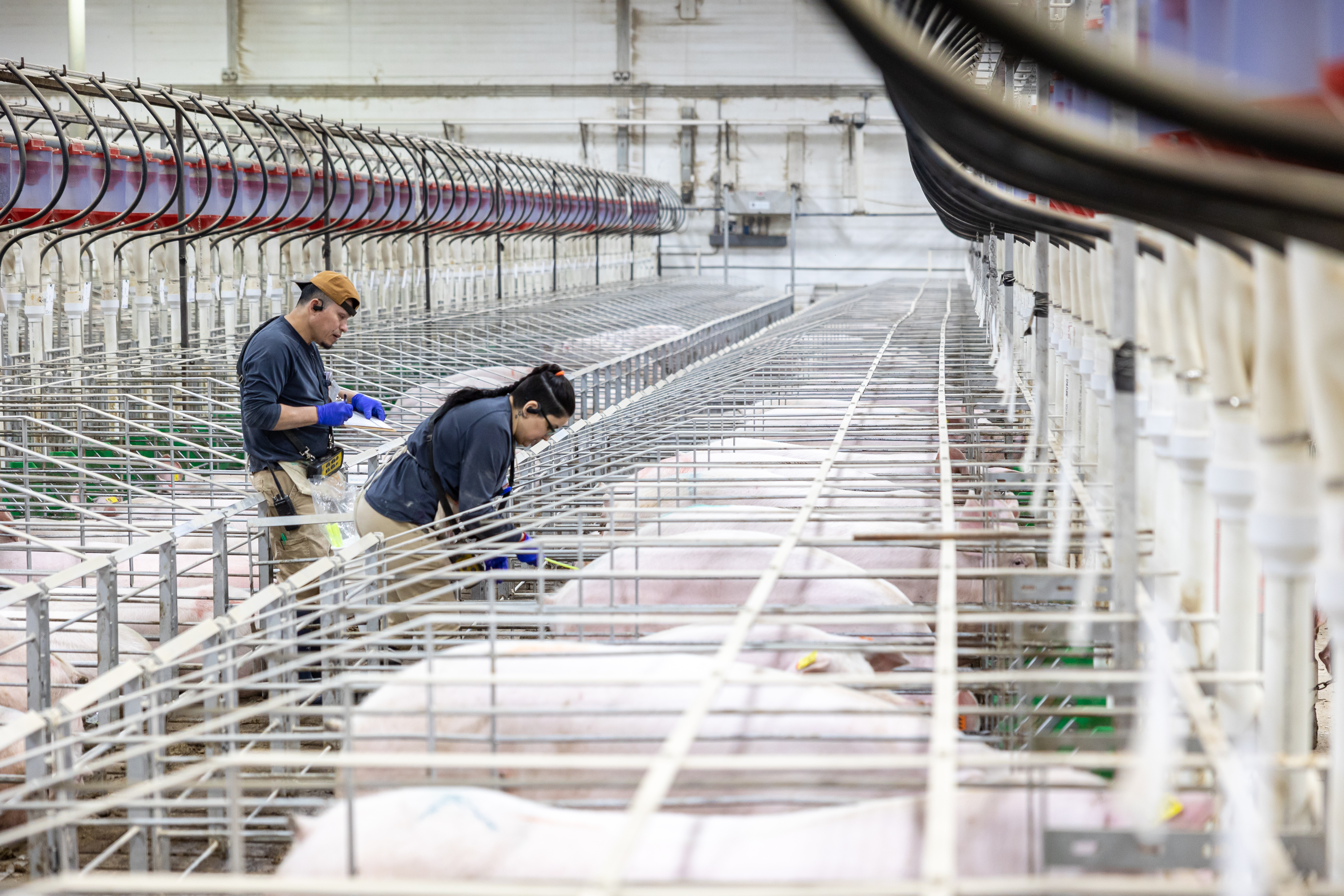Enhance sow robustness and performance by connecting the dots between genetics and management.
The key to operating a successful sow farm is to tackle the challenges impacting sow longevity. The challenges can be categorized into six areas: lameness, reproductive health, digestive health, disease, sow performance and economics.
PIC is dedicated to addressing these swine industry challenges with sound genetic strategies paired with recommendations for ideal on-farm nutrition and management practices. By focusing on the science of genetics alongside solid technical recommendations, we at PIC strive to make our customers the world’s most successful pig producers. A key component to that success is sow robustness, which is a combination of heritable traits that can be enhanced with sound management.
“We are a swine genetics company, so we must make sure we incorporate robustness in the PIC animal through genetic avenues,” explains Dan Hamilton, director of product performance at PIC. “That’s what makes us different.”
Genetic foundation
Building a strong genetic foundation is crucial for sow longevity. PIC continues to innovate and reevaluate our understanding of how genetics and production best practices support sow longevity.
Because sound feet and leg structure is highly correlated with longevity, we have started using digital phenotyping technology to increase the precision and pace of improvement in this category. By capturing videos in the barn and pairing them with lifetime production data, we have evolved the standard for locomotion scoring. Digital phenotyping removes subjectivity in the scoring process and increases consistency. This new scoring method improves our ability to create genetic change.
Robustness in the real world
Traditionally, we use our nucleus farms to develop and select breeding animals. However, we manage these farms at a high-health status, which doesn’t accurately reflect all commercial production conditions. For example, the management level required to breed replacement animals creates a lack of variation in mortality and removal rates compared to typical commercial settings.
To address this difference, we developed the Maternal GNX program, through which customers share their commercial system’s data and we tie the data back to our breeding program. The commercial performance data allows us to see which families exhibit robustness traits in real-world situations, expanding our understanding of how to select and add new traits for robustness. We are collecting 150,000 records per year to strengthen our genetic selection decisions.
The information collected through the Maternal GNX program has helped us focus on challenges that impact sow retention the most. Almost one year ago we introduced the first of these traits focused on the genetic risk of pelvic organ prolapse (POP). Since then, we have been able to lower the risk of this trait in our Elite populations back to rates that would have been estimated in the second half of 2017. In addition, the Maternal GNX program has provided more insights on sow reproductive health genetic traits.
Providing the tools for success
Even with advances in genetic improvement, having the right on-farm tools or management practices can make or break a sow’s success. Therefore, we provide a suite of tools and information producers can use to help sows reach their genetic potential. We focus on three main areas of sow farm management: body condition scoring, sow care and female development through the first parity (P1).
Since we have improved swine genetics and created greater genetic potential for growth, we have also updated our body condition scoring guides to help with sow breeding management. Accuracy of body condition measurement is key to keeping sows in optimal condition, so we have refined a caliper for measuring PIC sow body condition and revised feeding recommendations to match. Reach out to the PIC team to learn more.
Another proven tool to support sow longevity is a solid, consistently executed sow care plan. To help customers increase sow lifetime performance, we recommend clarifying the reasons for sow removal, making the best breeding choices, managing breeding animal inventory and making timely interventions and treatments.
We also provide recommendations and resources for creating a successful female development plan through breeding for second parity. By setting up young females for success through parity 1, we help them be more profitable members of the herd.
To support each of these key management areas for sow robustness, we have a hands-on technical support team that focuses on female reproduction and nutritional requirements. The team visits customer farms and provides technical expertise on how to best manage and feed a PIC animal to maximize longevity.
To learn more about how you can find success with PIC females, contact your local PIC rep or visit our resources page.






